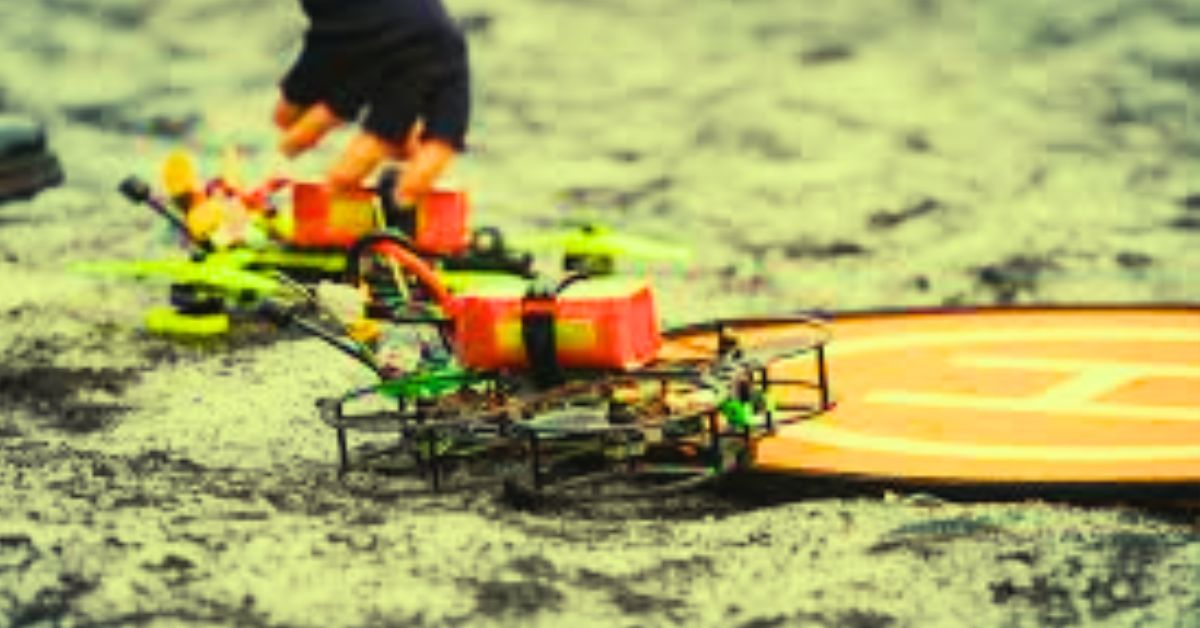Drone racing has quickly risen in popularity, captivating tech enthusiasts, competitive gamers, and sports fans alike. Combining skillful flying with cutting-edge technology, drone racing offers a high-adrenaline experience that’s both thrilling to watch and challenging to master. If you’re new to the sport and intrigued by the idea of zipping through the air at high speeds, this beginner’s guide will help you get started.
What Is Drone Racing?
Drone racing is a competitive sport where pilots control high-speed drones to navigate through complex obstacle courses. The goal is simple: complete the course as quickly as possible without crashing. Pilots wear first-person view (FPV) goggles that show live video feed from their drone’s camera, giving them a cockpit-like view as they weave through gates and sharp turns at impressive speeds.
Why Is Drone Racing So Popular?
The appeal of drone racing lies in its unique combination of gaming, flying, and competition. Pilots must have quick reflexes, sharp spatial awareness, and an understanding of their drone’s mechanics to excel in this sport. Thanks to organizations like the Drone Racing League (DRL) and MultiGP, drone racing has reached mainstream audiences, making it more accessible for beginners.
Essential Equipment to Get Started
To begin your journey into drone racing, you’ll need a few key items:
- Racing Drone: Racing drones differ significantly from typical photography drones. They’re built for speed, agility, and quick turns. Most beginner racers choose ready-to-fly (RTF) kits, which come pre-assembled and include a transmitter, battery, and sometimes FPV goggles.
- FPV Goggles: FPV goggles offer an immersive experience by allowing you to see from the drone’s perspective. They are essential for serious racing as they give you a direct view of the course, which helps in maneuvering quickly.
- Remote Controller (Transmitter): The transmitter is what you’ll use to control the drone’s movements. A reliable, easy-to-use controller with a comfortable grip will make your early flying experiences more manageable.
- Extra Batteries and Spare Parts: Racing drones can drain their batteries fast, so having extra batteries is a must. Additionally, drone racing can be rough, especially for beginners. Be prepared with spare parts like propellers, as crashes are common when learning.
- Drone Racing Simulator: Many beginners start with a drone racing simulator before flying an actual drone. Simulators like VelociDrone, DRL Sim, and Liftoff help you practice racing maneuvers in a virtual environment, allowing you to improve without risking damage to a physical drone.
Understanding the Basics of FPV Flying
Flying a drone in FPV (first-person view) is an entirely different experience from flying line-of-sight. When you fly FPV, it feels like you’re sitting in the cockpit of the drone, which can be thrilling but also challenging. Here are some beginner tips:
- Start Slow: Focus on mastering basic movements, like hovering, turning, and landing. Gradually increase speed as you become more confident.
- Practice in Open Spaces: Begin your training in large, open areas free of obstacles. This reduces the risk of crashing and allows you to focus on learning how your drone handles.
- Get Comfortable with Simulator Training: Most drone racing simulators offer tutorials and training modes. Practice flying through gates, making sharp turns, and controlling your throttle before taking to the skies for real.
Tips for Your First Drone Race
Once you feel confident enough to enter your first drone race, here are some tips to help you make the most of the experience:
- Know the Course: Familiarize yourself with the track layout before the race. Visualize each turn and gate so you’re prepared to navigate the course without hesitation.
- Start with Smaller Events: Enter local races or beginner-friendly events before aiming for larger competitions. These smaller gatherings allow you to gain experience without the high pressure of bigger tournaments.
- Focus on Consistency Over Speed: In the beginning, prioritize finishing the course without crashes over trying to be the fastest. Building consistency and control is crucial in drone racing.
- Ask for Help and Join Communities: The drone racing community is welcoming and passionate. Join online forums, attend meet-ups, and don’t be afraid to ask for advice. Many seasoned racers are happy to help newcomers.
- Analyze Your Flight Footage: Most FPV goggles can record your flight footage, which is useful for reviewing and learning from your mistakes. Watch replays to understand where you can improve.
Safety and Regulations in Drone Racing
Safety should always be a priority. Racing drones are fast, powerful machines that can cause harm if not operated responsibly. Always follow these guidelines:
- Fly in Designated Areas: Avoid flying in restricted areas or near people who are not involved in the race.
- Stay Below Legal Height Limits: Many regions have height restrictions for drone flights. Staying below these limits ensures safety and compliance with local regulations.
- Follow Event Guidelines: Official drone racing events have rules regarding drone weight, battery types, and flying protocols. Adhere to these rules to ensure a safe and fair competition.
The Future of Drone Racing
Drone racing is still a young sport, but it’s growing fast. Innovations in drone technology, such as improved camera quality, battery life, and advanced control systems, continue to push the boundaries of what’s possible. The rise of competitive leagues, sponsored races, and even VR-based spectating options are helping drone racing evolve into a mainstream sport.
Conclusion
Drone racing offers an exhilarating combination of skill, speed, and cutting-edge technology. As a beginner, focus on building your skills step-by-step, investing in quality equipment, and practicing consistently. With dedication and enthusiasm, you could find yourself mastering this high-speed sport and perhaps even competing in a league. Whether you aim to go pro or just enjoy the thrill of racing, drone racing is an exciting journey that welcomes new pilots from all backgrounds.
